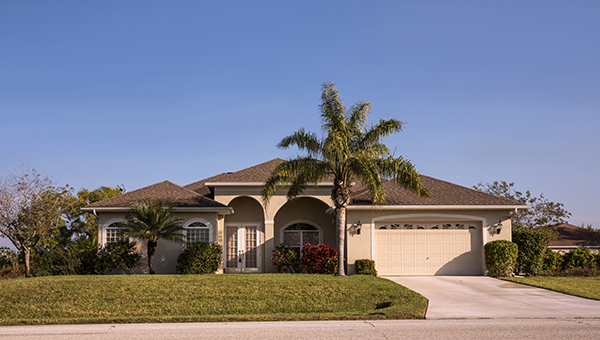The Best Materials for Orlando Roofing Projects
Author: Dan Stout | May 10, 2024
Roofing in Florida can be a challenge. Not only do you need to select materials that can withstand baking heat, shirt-drenching humidity and hurricane-force winds, but you need the advanced skill set required to install and service those materials. In addition, Florida's roofing code is complex.
Orlando roofing providers must do great work as well as educate their customers about the importance of proper materials and quality installation. Here are some Florida-specific weather challenges, and how to select materials that can ensure a successful Florida roofing installation.

Storm Season and Sun Season
According to the National Weather Service, the rainy season in Florida runs from May to October, a five-month period marked by hail, high winds, lightning, heavy rainfall and, of course, hurricanes. Hurricane season is most intense from August to October, peaking in mid-September.
Florida is the hurricane epicenter of the US. A full 40% of all US hurricanes make landfall in Florida. The Sunshine State has seen a total of 120 hurricanes between 1851 and 2022, while the states with the second and third most landfalls (Texas and Louisiana) have 126 combined. Florida also has the most Category 3 or higher landfalls, with wind speeds ranging from 111 mph to in excess of 150 mph. These powerful winds generate storm surges that drive water in to shore, creating flooding and other hazardous conditions.
The other seven months of the year are marked by what Florida is best known for: sunshine, heat and humidity.
To install the best roofs possible, you'll need to understand the give and take of these two extremes and select your materials accordingly. Don't wait until the perfect weather comes along to install a new roof. Invest some time now to consider new roof materials and installation options, rather than wait until Mother Nature makes it a pressing issue.
Selecting Materials for Orlando Roofing
With the clear risk of damage from hurricanes and intense storms, it will come as no surprise that Florida has some of the most specific roofing code requirements in the nation. Florida Building Code: Residential, Chapter 9 provides detailed requirements for roofing materials.
The most important step when selecting materials is verifying that they're approved for use in Florida. The state of Florida has two different approval lists: one for HVHZ (High Velocity Hurricane Zone) use and one for non-HVHZ use. In addition, Miami-Dade County maintains a list of approved materials. You can check the online databases of Florida-approved products and Miami-Dade-approved products to make sure you're in compliance, or you can avoid the whole headache by buying from a well-established vendor.
For example, if a homeowner wants to install GAF Timberline asphalt shingles, then a vendor like Beacon Roofing will be able to provide documentation proving that it's Florida-approved or Miami-Dade-approved (or both). It's essential that you take time to do this with all the materials you plan to use for a project, whether it's roofing, flashing, fasteners or underlayment.
Popular Orlando Roofing Materials
Metal roofing is highly impact-resistant and, when installed properly, can withstand high winds. It's often installed in flat sheets but also comes in profiled sheets that give a more attractive appearance from the street.
Ceramic or composite tile roofs are popular for their appearance and added insulation. Some lines may also reduce wind damage due to their curved profile. Their traditionally lighter coloring absorbs less heat, helping keep the home cooler and reducing heating costs.
Similarly to most of the country, the most common residential roofing material in Florida is asphalt shingles. While asphalt shingles are often chosen for their affordability, it's important to select shingles that can resist the blistering heat and storms that batter Florida homes.
The 25% Rule
Many roofers and homeowners have heard of Florida's so-called 25% rule. This was a policy mandating that any repairs to more than 25% of a roof would require the rest of the roof to be brought up to current code. This was a big deal in storm-plagued Florida, as damage to part of a roof often led to an entire roof replacement.
As of May 2022, the 25% rule no longer applies so long as the existing roof "was built, repaired, or replaced in compliance with the requirements of the 2007 Florida Building Code, or any subsequent editions of the Florida Building Code."
Post-Disaster Roofing
When disaster strikes, homeowners need all the help they can get. Familiarize yourself with post-disaster assistance programs, like those offered by the Florida Division of Emergency Management. You can make your life and the homeowner's life much easier if you know the basics of how to get a claim process started.
Whether you're building a new business in Florida or simply visiting for storm season, reach out to your local Beacon Supply for expert guidance on local requirements for material selection and installation.